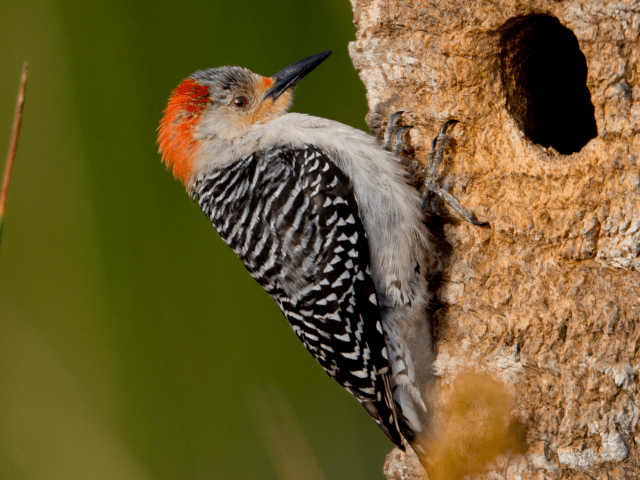The US has 23 native woodpecker species, so a state with about 8 of them is worth visiting.
That's the number you'll see in North Carolina.
There are rare woodpeckers, common ones like downy woodpeckers, and backyard visitors. Do you know when you should go birding to see woodpeckers in North Carolina?
Well…
Since most of them have a resident population, birding is possible any time of the year. But, to see all eight birds, you'd have to visit different parts of the state as some live on the eastern side only.
The 8 Woodpeckers In NC
1. Red-headed Woodpecker

It's of average size, ranging from 7.5 to 9.1 inches long. But, what you should be more into, other than its size, is its beautiful red, black, and white feathers. It's red from the crown to the neck, its upperparts are black, and its underbelly is white.
It's not a fan of bird feeders like other birds, so you may have to visit a park to see it. But, when it shows up at your suet feeder, it'll carry away food for later and stash it in a nearby tree. It always has a cavity tree nearby waiting to serve as a store.
A red-headed bird’s diet includes beetles, berries, and seeds. You should see it catching flies in the air. It's so meticulous!
The population of the red-headed woodpecker is declining due to habitat loss, so it's rarer than other woodpeckers in North Carolina. You can see it in the woodlands most times of the year. It nests in dead trees and rooftops.
2. Red-bellied Woodpecker
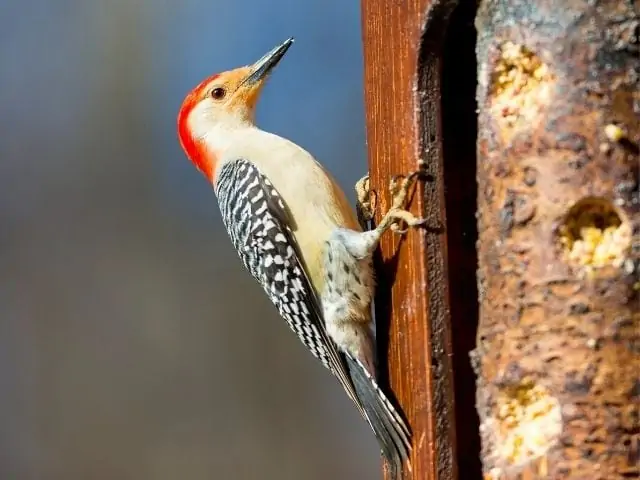
It's a common sighting any time of the year in NC. Its size is between a hairy and a downy woodpecker, at 9.4 inches long. Plus, a red-bellied woodpecker is also a backyard feeder visitor like most of the woodpeckers we'll talk about here.
It gets its name from a red patch on its head, though it's not as elaborate as the red-headed bird we talked about above. A red-bellied woodpecker also has reddish plumage on its belly, so look for a red crown and barred wings.
It loves woodlands for the abundant supply of spiders, grass, nuts, and fruits. The red-bellied woodpecker isn't fuzzy about nests, often going back to the same one the following year. It doesn't drill trees; instead, it picks at the bark. Favorites include oak, longleaf pine, hickory, and hardwoods.
3. Pileated Woodpecker
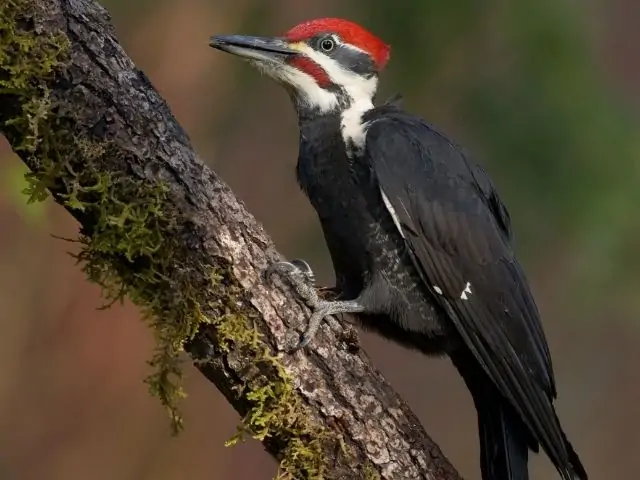
It's the largest woodpecker in NC though it's not as large as an ivory-billed woodpecker. A pileated woodpecker is between 15.8 and 19.3 inches long, while an ivory-billed bird averages 18.1 to 20.1 inches long.
They are almost similar in plumage with a characteristic red crest and black and white stripes across the upper and underparts.
However, the population of the ivory-billed bird declined years ago due to the destruction of old-growth forests and the lack of a mature pine forest in most states.
The pileated birds live in NC all year round though they don't frequent bird feeders like other species. But, they may show up when you have dead or almost dead trees in your backyard.
Further, you may lure them with nest boxes.
They eat carpenter ants, fruits, insects, and nuts.
4. Downy Woodpecker
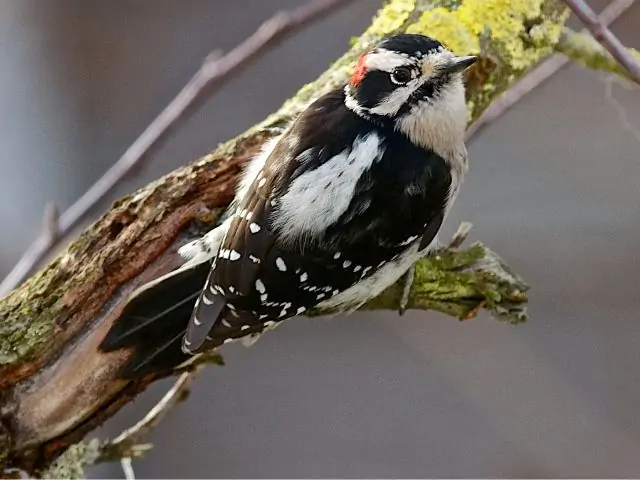
It's the smallest of them all, at between 5.5 and 6.7 inches, and there's a resident population in North Carolina. Downy woodpeckers love bird feeders as there's always something delicious to savor, from suet to black oil sunflower seed.
These birds are the first to note and explore a new feeder. Even in winter, you'll spot them hammering trees to catch insect larvae. Plus, they also eat berries and acorns. If you're birding during their nesting season, you'll note nest cavities in dead trees and branches with about three to eight white eggs.
Also, watch out for birds with black and white plumage. The male bird has a red crown.
5. Hairy Woodpecker
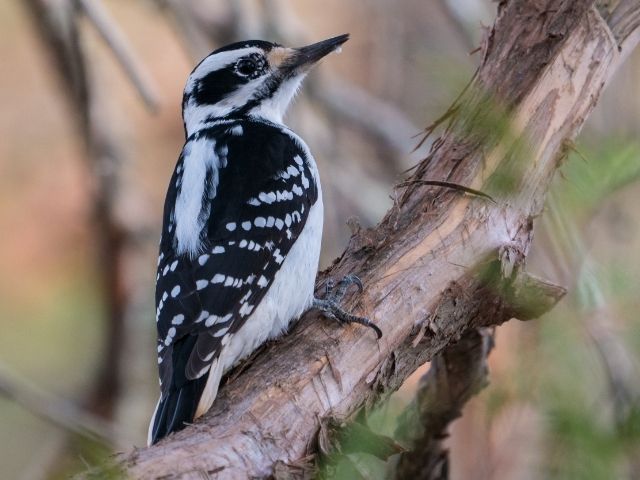
You might think you've spotted a downy woodpecker when it's a hairy woodpecker because they have similar plumage. However, the latter is bigger than the former by about one to 4 inches. Its bill is also longer.
These birds love the same habitat as the ones above, and they also come to bird feeders. In the wild, they eat wood-boring insects, beetle larvae, caterpillars, and spiders.
The best nesting cavity is dead trees like the bird above, and this one lays between three and six eggs.
6. Yellow-bellied Sapsucker
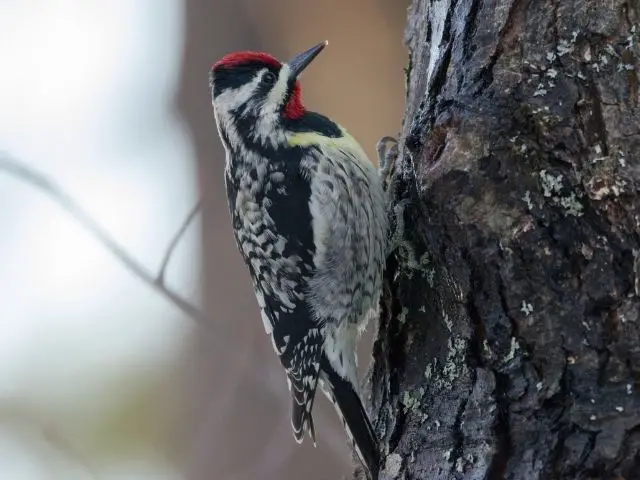
Like most woodpeckers, its plumage is red, yellow, white, and black. Even though it's a yellow-bellied sapsucker, its underbelly is pale with striking yellow feathers under its bib. It's 7.1 to 8.7 inches long, about the same size as the red-headed woodpecker and the hairy species.
Therefore, the yellow-bellied sapsucker spends the day hammering trees to create horizontal rows of wells where tree sap collects.
Insects also slide into these sap wells, turning into a nutritious meal for sapsuckers. Their favorite trees are birch, hickory, and maple.
Sapsuckers are migratory, so you'll see them in NC in winter. When exploring deciduous forests, listen for mewing calls.
7. Red-cockaded Woodpecker
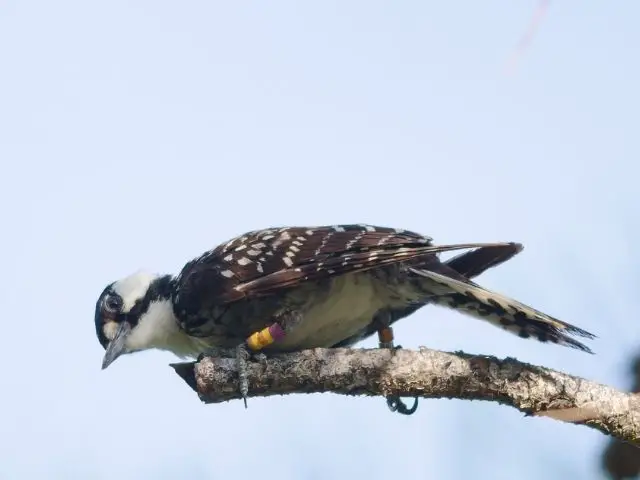
The Picoides Borealis, or the red-headed woodpecker, isn't common as it lives in some northeastern states. Fortunately, there's a resident population in about half of North Carolina, more to its eastern side.
Therefore, birders, like you, can explore the state's longleaf pine forests, more so the ones affected by heart fungus disease, as it softens the wood for the red-cockaded woodpecker. There's a generous supply of insects like beetles and ants in this habitat.
Also, they can get longleaf pine seeds, blueberries, among other fruits and seeds. Some birding zones to visit in NC are Carvers Creek, Patsy Pond Nature Trail, and Weymouth Woods Sandhills Nature Preserve.
Red-cockaded woodpeckers are almost the size of a hairy, ranging from 7.9 to 9.1 inches long. Their upper parts have white and black bars, and the males have an inconspicuous red streak on the cheeks.
They build a nest cavity in pine tree forests and lay up to five eggs.
8. Northern Flicker
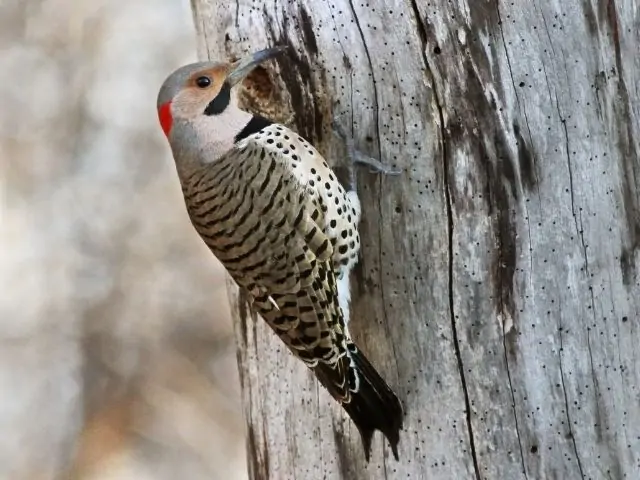
You'll know they are flickers if they have a yellow shaft under the tail and a white patch on the shoulders. Males have a red nape.
They grow to 12.2 inches long with a wingspan of up to 12.1 inches.
Like other woodpeckers, the northern flicker eats ants, beetles, seeds, and fruits. This species also forages on the ground. It lives in open woods, suburbs, plus forest edges. If you want to attract northern flickers to your yard, install a nest box and plant fruits like grapes and elderberries.
Birding is unforgettable. As you prepare for your tour of North Carolina, do you know how to ID different species?
Let's look at:
Ways To ID Birds
Plumage Color
It's by far the easiest and most exciting way as birding zones have an eclectic mix of plumage colors. But, plumage changes with seasons, such as the breeding season. Therefore, if you know how a bird looks in the adult phase,
Further, observe a bird in good lighting, or you may mistake its color. For example, the yellow-bellied sapsucker has yellow streaks on its chest and a pale belly that you may only see in daylight.
You may also miss the small red line on a red-cockaded woodpecker when you go sighting early or late in the evening. To ID a bird using color, carry pictures on your phone or note down the plumage colors on a notebook beside the name of a bird.
A Bird's Behavior
For instance, if a red-headed woodpecker comes to your backyard, watch it carry seeds from the yard and hide them in a tree trunk.
On top of that, you can tell there's a yellow-bellied sapsucker around when you see sap wells in a live tree. You'll also distinguish a northern flicker when it forages on the ground.
The Bird’s Size
After knowing a bird's behavior and color, you can use its size to tell its name. It'd be hard to use size only as some birds are almost similar in size. As we mentioned, downy woodpeckers are about the size of the hairy species.
For example, you can say a big is bigger than an American robin or smaller than a hawk. However, since they are wild species, often seen perched on trees, size may not be the best ID detail unless you're close.
Sound
We know all woodpeckers hammer and call loudly. Ignore the hammering sound and listen to the call. Some have shrill cries, while others have a whining sound.
Hear the sound of a male woodpecker in this video:
A Bird's Tail
A distinct tail, such as the yellow or red feathers of the northern flicker, is a great ID detail. Some birds have long tails, while others have rounded, pointed, or short tails. You can see the size of the tail from above, below, or from the side. Also, in flight, the tail's shape stands out.
Therefore, there'd be no reason to assume we can see an acorn or Gila woodpecker here, yet there are no sightings in this state.
Frequently Asked Questions
What's The Biggest Woodpecker In North Carolina?
The pileated woodpecker is the biggest, with a wingspan of 26 to 29.5 inches and about 19.3 inches long.
Is It Good To Have Woodpeckers In Your Yard?
Woodpeckers leave holes after hammering the bark or branches of trees. When there's a flock in your backyard, you'll get free music in all manner of shrill calls and also have your trees drilled for nest cavities, carpenter bees, and sap.
The diameter and number of holes vary with the species and the purpose. For example, when a sapsucker wants to harvest sap, it drills a row.
But, when they are drilling holes to gather insects, it means you have a situation in your backyard, and they are helping you put it under control. No?
If they damage too many trees, you can use bird netting or cut down these trees and plant the ones they don't like. Further, you can install nest boxes.
Final Thoughts
Since these avian friends visit backyards, there are ways to make it more bird-friendly. That'll give you time to have a closer look at plumage, wingspan, and other ID details. It's not just about food; leave put up nest boxes, birdbath, and dead trunks.
But, if that's too much work and you still want to take walks in forests and parks, there are plenty of places to visit in NC. Except for the yellow-bellied, red-cockaded woodpecker, and red-headed, the others have a year-round population.

